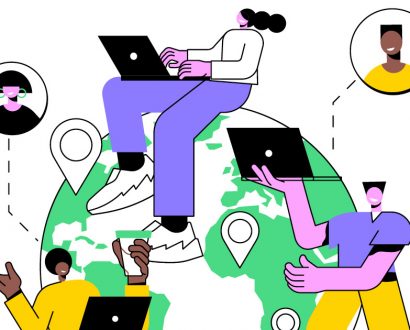Futurist Amy Webb outlines in the Future Trends Report how AI, biotechnology and wearable devices are converging in a way that will redefine many aspects of life and work.
Across industries and geographies, organizations are trying to respond rapidly to the transitions that are underway and coming.
For organizations to adapt and thrive in the age of transition, they need leaders with the cognitive capacity, emotional awareness and resilience to lead the change. For many leaders, this means they must shift and uplift their leadership approach.
As Robert J Anderson and William Adams wrote in their book Mastering Leadership: “The Leadership Imperative is simply this: The development of leadership effectiveness must, at a minimum, keep pace with the rate of change and the rate of escalating complexity.”
The working world is getting more complex, and change is never-ending.
Innovating in a changing world
The organization’s operating context changes as technology creates new competitors, different approaches and changing market trends.
Leaders need to understand this context so they can assess the unique needs and challenges and adapt their leadership style accordingly.
Agile and adaptive leaders recognize that they may need to pivot their strategies and decision-making approach. For example, making decisions when there are many unknowns is different from making decisions during times of stability.
Leading in the age of transition requires leaders to be willing to take a stand on the issues that matter.

Leading in the age of transition requires leaders to be willing to take a stand on the issues that matter.
Taking a stand requires courage and fortitude. There will be dissenters and doubters. You need to open your heart and mind to different ideas and perspectives while confronting decisions you’ve likely not faced before.
When scientists work through a problem, they set the hypothesis to explore. They then apply different thinking, try different things and analyze the results. They repeat this process of thinking, trying and analyzing until they have an answer to the question they’re trying to solve.
This approach is relevant for leaders during this period of transition. To move forward with change, you must explore, examine, create and then be willing to alter and iterate to reach the desired outcome.
Build a learning culture
At the heart of this is the ability to make decisions, sometimes with imperfect information. Prevarication and inertia will not help you succeed, and you can’t wait for all the knowns to be known. Not every decision will be perfect.
Instead, the focus is on learning from the decision and the consequent outcome so you and your team can keep moving forward. Successful adaptation requires a learning culture that is built on emotional intelligence, cognitive flexibility, problem-solving and critical reasoning.

Employees need dedicated space to think, ponder, reflect and analyze so ideas can arise. Finding that time doesn’t happen by accident.
For these skills to flourish, they need an organizational culture where employees can challenge, explore, suspend judgment and are supported to examine problems in different ways.
While there is specific learning that underpins all new skills, one common element is that they all require space and thinking time.
Employees need dedicated space to think, ponder, reflect and analyze so ideas can arise. Finding that time doesn’t happen by accident. It takes deliberate planning and conscious thought. It requires their leaders to recognize that there are times for speed and times to go slow.
Elevating the human-to-human equation
At our core, humans need connection, community and collaboration to survive. Johann Hari’s excellent book Lost Connections: Uncovering the Real Causes of Depression and the Unexpected Solutions is a stark reminder that humans crave connection. Without connection, we feel lost and isolated, which impacts our mental health and wellbeing.
Adaptive leaders know that technology can’t replace connection. They accept that to have a thriving organization and team, they must prioritize the human-to-human equation.
Strengthening this vital aspect of workplace culture takes effort. Here are a few strategies to consider:
• Cultivate a human-centric work culture by prioritizing employee wellbeing, mental health and work–life balance. A supportive and inclusive work environment fosters interpersonal connections and encourages people to do their best.
• Invest in emotional intelligence training to equip employees with the skills to understand and connect with others. It can help build stronger teams, improve leadership effectiveness and enhance customer interactions.
• Encourage collaboration across different teams and departments to break down silos, promote knowledge-sharing and enable a diverse range of perspectives to come together for innovative problem-solving.
Leading in the age of transition will be filled with complexity, uncertainty and cognitive challenges. Leaders who succeed will do the work now to ensure they are ready for it.







